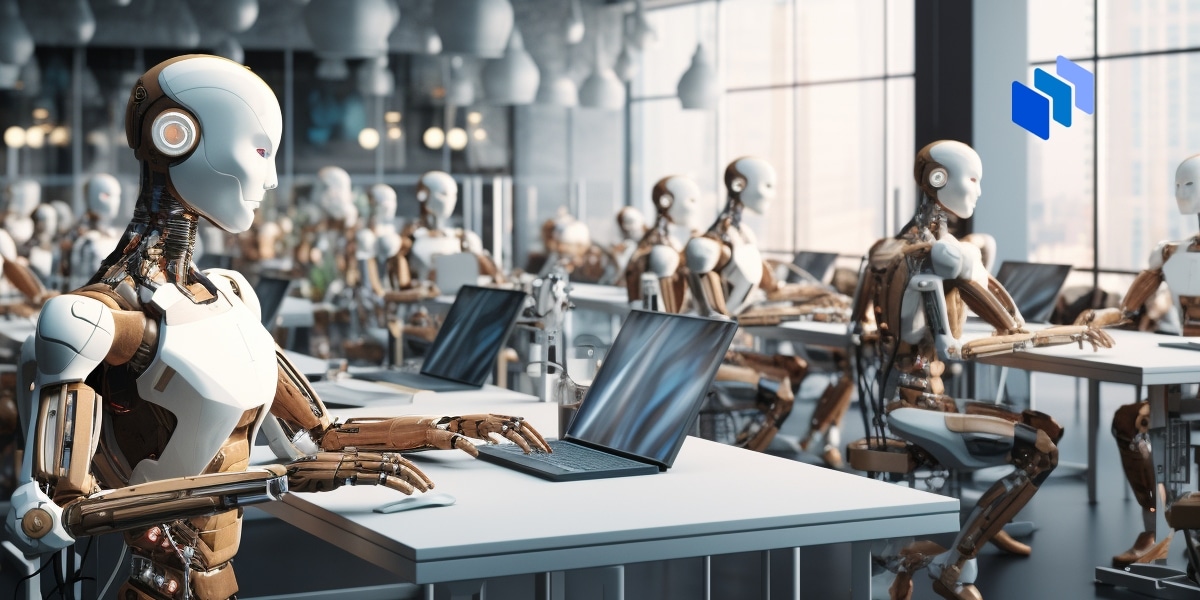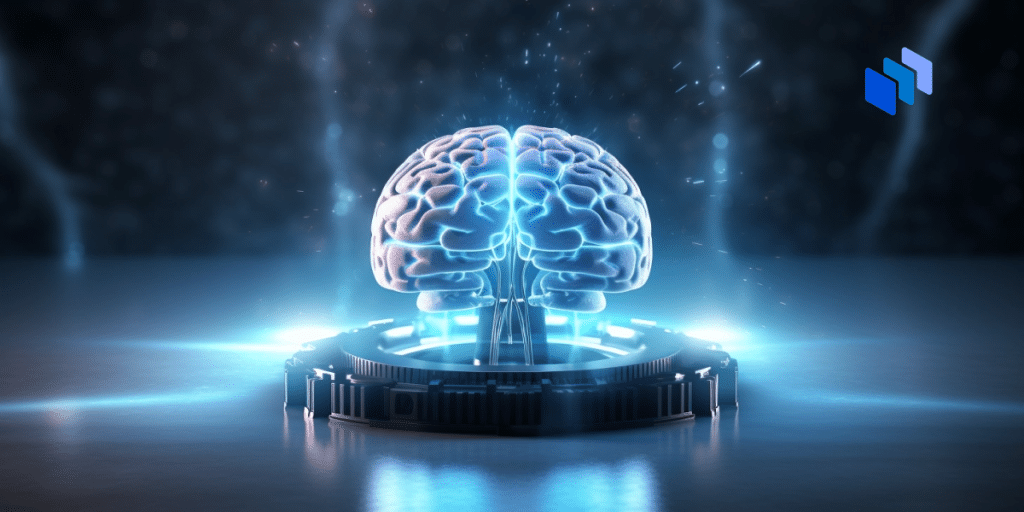In 2023, artificial intelligence (AI) entered the mainstream to become a pivotal force in reshaping the workplace. Its presence is undeniable, with CEOs and workers gently accepting AI in the office, and those who ignore its influence risk falling behind in an ever-evolving marketplace.
As businesses increasingly turn to generative AI to enhance human experiences and streamline operations, a critical need emerges to balance the technological prowess of AI with a deep-rooted commitment to ethical practices and governance.
Business leaders must now face the intricate dance of harnessing AI’s efficiency in the office while steadfastly upholding the pillars of ethics. The challenge is to ensure that the march towards innovation does not compromise fairness, transparency, and human dignity. But where should they begin to navigate this ethical AI dilemma?
The New Workforce: AI Empowerment and Human Ingenuity
The overused phrase “AI will not replace you, but the person using AI will” simplifies the complex reality of how technology is impacting the workplace. The widespread integration of AI in various sectors, from manufacturing to customer service, undoubtedly enhances efficiency and reshapes job roles.
But this shift isn’t just about job displacement; it’s about evolving job requirements and creating new roles that demand advanced skills like data analysis and complex problem-solving.
Low-paid workers are up to 10 and 14 times more likely to be replaced by AI than higher-paid workers (McKinsey)
Consequently, companies must ensure that their workforce isn’t left behind in this transition. Investing in employee training and development, particularly AI-related skills, is essential to navigate this new landscape. The key is not to compete with AI but to use it to enhance human capabilities.
Forward-thinking leaders should focus on how AI can complement and elevate the work of their employees, fostering a workplace where technology and human talent work in tandem.
By doing so, they can create a future where AI and humans coexist, leveraging each other’s strengths for more incredible innovation and efficiency. This approach safeguards jobs and propels the workforce towards a more advanced, AI-empowered future.
Balancing Automation with Human Innovation
Companies that solely focus on replacing human workers with AI risk falling behind in the long term without considering the broader implications and opportunities ahead.
The rapid integration of AI in the office, as seen with tools like ChatGPT, does pose a threat of short-term job displacement, especially among white-collar workers. This phenomenon echoes historical shifts, such as the introduction of electricity and computing, which initially caused job losses but eventually led to new industries and employment opportunities.
The critical difference with AI is the unprecedented speed of its adoption. This swift integration could lead to a significant gap between job losses and creation of new roles, a gap that companies must proactively address. The successful businesses will be those that not only integrate AI for automation but also leverage it to enhance human productivity and foster innovation.
This approach involves a radical redesign of corporate processes and a culture that embraces boldness and a startup mentality, as exemplified by companies like Adobe using AI in Photoshop and Nvidia in chipmaking.
56% of employees don’t know or are unsure if their organizations have ethical standards. (Deloitte)
Companies that view AI as a tool for empowering employees and driving innovation rather than just a means to cut costs are more likely to create new value and opportunities. This strategic approach will help mitigate the short-term risks of job displacement and position these companies as leaders in a rapidly evolving AI-driven economy. Those who fail to embrace such an innovative mindset may struggle to compete and adapt, ultimately getting left behind.
Beyond Innovation: Tackling Ethical Debt in AI Development
The ethical implementation of AI is crucial to avoid the build-up of technical debt. However, ethical debt, a concept increasingly recognized in AI development, refers to the long-term societal harm caused by overlooking ethical considerations in a rush to innovate. This type of debt is particularly pertinent when AI is used in sensitive areas like emotional monitoring.
For example, Canon China’s implementation of AI smile cameras, requiring employees to smile to access workspaces and computers, raises significant ethical concerns. Such applications breach privacy and autonomy and foster a work environment of distrust and surveillance, contributing to ethical debt.
Conversely, AI that reduces cognitive load, such as digital assistants for calendar management and meeting transcription, exemplifies positive usage, enhancing productivity and job satisfaction without ethical compromise.
68% Believe ethical principles focused primarily on the public good will not be employed in most AI systems by 2030. (Pew Research)
The importance of ethical implementation in AI is underscored by the potential consequences of neglecting this aspect. The rapid pace of AI development often prioritizes market dominance over honest diligence, leading to inherent biases, lack of transparency, and potential misuse of AI technologies.
This rush can inadvertently perpetuate discrimination, violate privacy, and undermine user consent, thus accumulating ethical debt.
For larger organizations, establishing comprehensive, responsible AI programs and AI governance are critical. At the same time, smaller entities might benefit from agile, expert-guided approaches to ensure the responsible use of AI.
This balanced approach, weighing innovation pace against ethical deliberations, is essential not only for regulatory compliance but as a societal responsibility, ensuring AI’s sustainable and ethical integration in the workplace.
In the evolving human resources (HR) landscape, embracing AI ethically is paramount to maintaining fairness privacy, and eliminating biases. AI’s capability to automate tasks and provide insightful data for HR processes like recruitment, performance management, and employee engagement presents significant advantages.
For example, Ethical AI in talent acquisition empowers recruiters to focus on high-value tasks and make more informed decisions.
However, the ethical integration of AI in HR requires a balanced approach. To achieve this, HR departments should focus on using diverse and unbiased data for training AI systems, ensuring transparency and explainability in their AI applications, and upholding stringent privacy standards.
Involving employees in the AI development process and regularly monitoring the AI system’s impact are crucial steps to maintaining ethical integrity.
This balance between efficiency and ethical considerations is a regulatory necessity and vital for fostering a workplace environment characterized by trust and respect.
The Chartered Institute of Personnel and Development (CIPD) suggests three critical strategies for HR departments to manage AI integration ethically and effectively. First, setting clear guidelines based on ethical principles is essential. This includes establishing and communicating company-wide policies on AI usage, focusing on transparency, accountability, and data privacy.
HR should also engage and develop its workforce by creating opportunities for employees to enhance their roles through AI, promoting a culture of shared learning and collaborative problem-solving. Finally, HR needs to adopt a strategic approach to AI, stay informed about new developments and competitive dynamics in AI, and assess potential impacts on the business model and competitive positioning.
By adhering to these recommendations, HR can effectively harness the potential of AI in the office while navigating its ethical complexities, ensuring a future where AI is a tool for human empowerment and innovation in the workplace.
Balancing Act: Innovation and Responsibility in AI Development
Businesses increasingly seek ways to balance innovation with responsibility, especially in AI. A vital aspect of this balance involves ensuring AI systems are transparent and explainable. Transparency in AI allows individuals to understand how decisions are made by the system, fostering trust, particularly in critical sectors like healthcare.
Developing AI with diversity and inclusivity at its core is crucial. This approach includes using varied and representative data for training AI systems and forming diverse development teams, thereby minimizing bias and enhancing the reliability of AI applications.
Additionally, businesses must focus on using AI within the office to augment human capabilities instead of replacing them. This approach necessitates significant investment in education and training programs, equipping workers with the skills to collaborate effectively with AI systems. New work models, such as job-sharing and flexible work arrangements, can also play a vital role in adapting to the changes brought by AI, mitigating the impact of automation on employment.
IBM exemplifies this approach to balancing innovation with responsibility in AI. The company emphasizes trust and transparency in integrating AI, advocating for AI as a tool that augments, not replaces, human intelligence. This approach ensures that users are fully aware when interacting with AI systems, enhancing trust in AI-driven processes.
Accountability and Transparency
The key takeaway is clear: AI in the office is a potent tool that, if used responsibly, can significantly enhance efficiency and productivity in various business operations. However, its deployment must be balanced with a solid ethical framework to ensure fairness, transparency, and respect for privacy. This balance is crucial in sectors like healthcare, where AI’s impact is profound, and in HR processes, where AI’s implications reach into the fabric of the workforce.
IBM’s approach to integrating AI offers a roadmap for businesses striving to achieve this balance. By advocating for transparency in AI systems, IBM ensures that users understand how AI makes decisions, fostering trust and accountability. Their commitment to diversity and inclusivity in developing AI systems helps mitigate biases and enhances the reliability of AI applications. Furthermore, IBM’s focus on employee training and reskilling prepares the workforce for an AI-augmented future, ensuring that the benefits of AI are shared widely and ethically.
The Bottom Line
To successfully integrate AI in the workplace, businesses should adopt similar strategies: prioritize clear and transparent AI systems, promote diverse and inclusive AI development teams, and view AI as a tool to augment, not replace human capabilities.
Additionally, investing in education and training programs is essential to prepare employees for a future where AI is a collaborative partner rather than a replacement.
Ultimately, by balancing the drive for innovation with a steadfast commitment to ethical practices, businesses can ensure that AI enhances human potential while driving responsible progress in the workplace.









